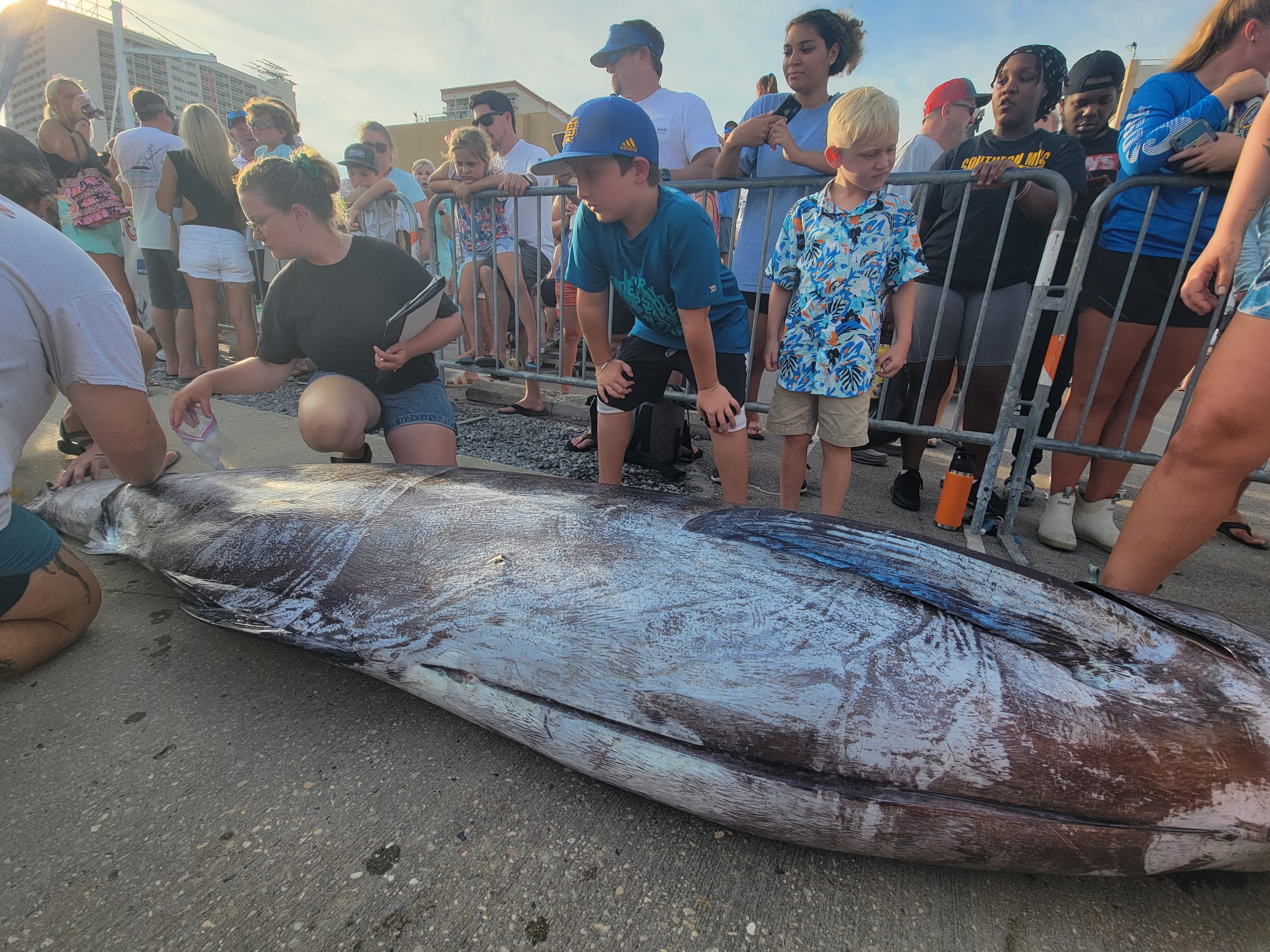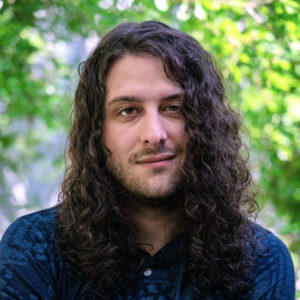Chris Lapniewski doesn’t lose his focus, even as the screams of victory ripple out across the crowd nearby, almost deafening. The celebration is well-deserved. Catching a nearly 800-pound blue marlin is a rarity, even for seasoned anglers. If that’s not enough, consider the hundreds of thousands of dollars on the line.
So it goes at the 25th Annual Mississippi Gulf Coast Billfish Classic, a perennial deep-sea fishing competition held in Biloxi. Countless teams of professional anglers gather at the docks outside the Golden Nugget Casino for a shot at piscine glory: to catch the biggest marlin, swordfish, tuna, wahoo or mahi mahi in the Gulf of Mexico. But to the side of the pier, onlookers watch a different team with their own distinctive goals.
For the field researchers at the University of Southern Mississippi’s Gulf Coast Research Laboratory, the tournament is more than a cultural event: it is an unbeatable opportunity to get a glimpse into the deep, vast ecosystem of the Gulf of Mexico. For a quarter of a century, GCRL researchers have attended the Billfish Classic, intercepting the trophy leviathans while returning fishermen celebrate.
Lapniewski, a research scientist at GCRL, is no stranger to the process of breaking down fish for scientific inquiry. He scoops the eyeball from a swordfish as easily as one might shell a peanut, extracting the lens—a perfect sphere, clear as crystal—and depositing it into a bag.
“I’ve been doing this for six or seven years now,” Lapniewski says.
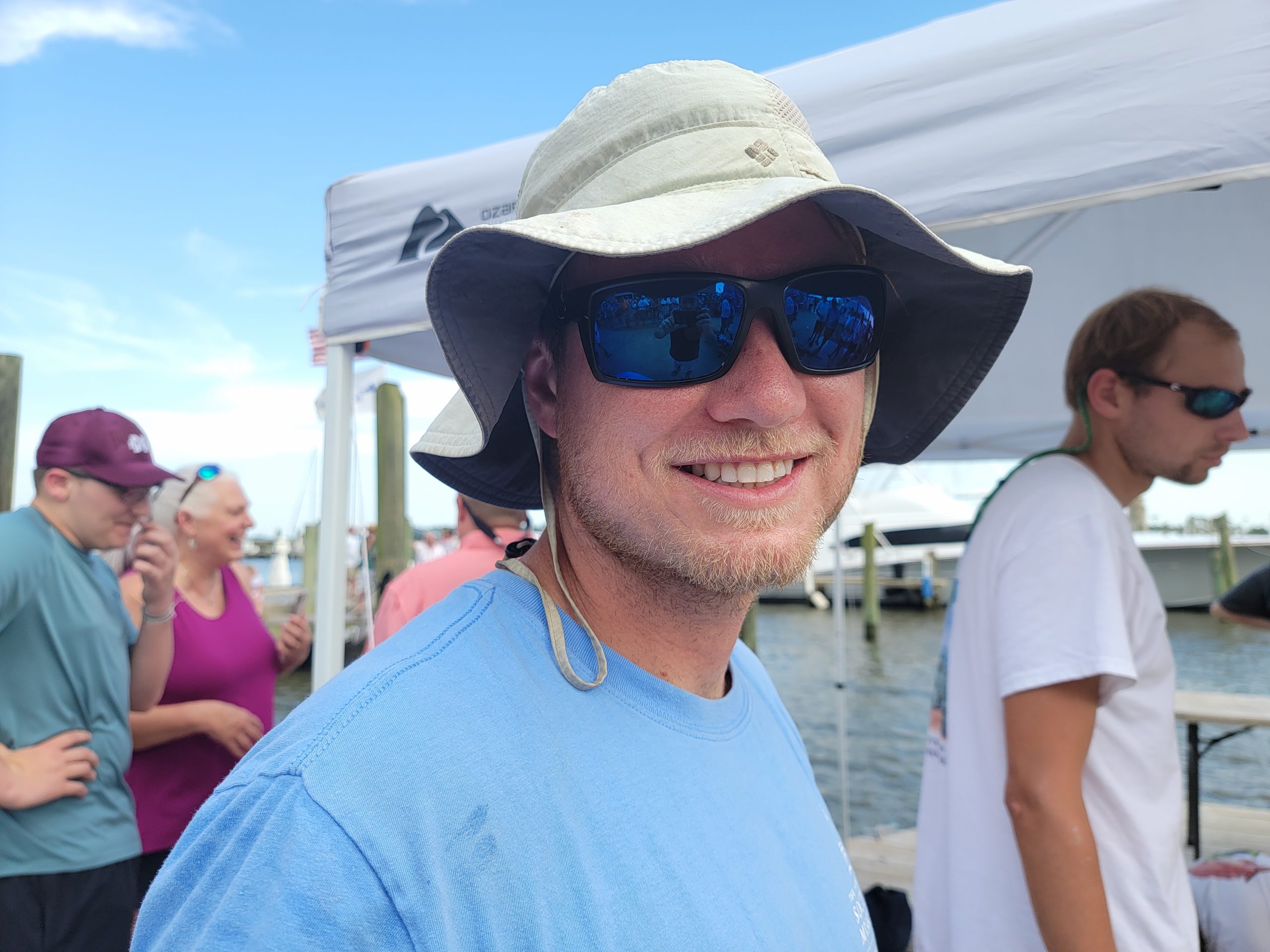
As he speaks, a pair of teens slip through the barrier separating the lab’s tent from the crowd to get a closer look at his work. “It’s something I really enjoy. I’ve seen myself doing it all my life. I grew up around this, in Bay St. Louis.” He pauses to give the observers a better look at the gemlike lens.
Performing field research under the gaze of hundreds of onlookers is a unique experience for the scientists of GCRL, but it’s yet another opportunistic benefit of their partnership with the Billfish Classic. All of the researchers present relish the opportunity to show attendees how science is investigative and physical—not merely something contained in a lab.
“Some of us want to do it all,” Lapniewski says with a smile. “(Fieldwork) lets you see what you actually enjoy. Maybe you love it, maybe you hate it. Maybe it takes your career in a whole different direction.”
Exploring the Delicate Balance of Life
To Lapniewski’s side, Elizabeth Greenheck, a USM graduate student, is sifting through the gills of a colossal marlin for another kind of opportunist. She is hunting for parasites, so small the untrained eye might miss them as sea detritus. A crowd of children are gathered around the fish, larger than all of them combined.
“A lot of these don’t hinder the fish,” she explains, half to this reporter and half to the surrounding children. “But it can tell you a lot about the environment.”
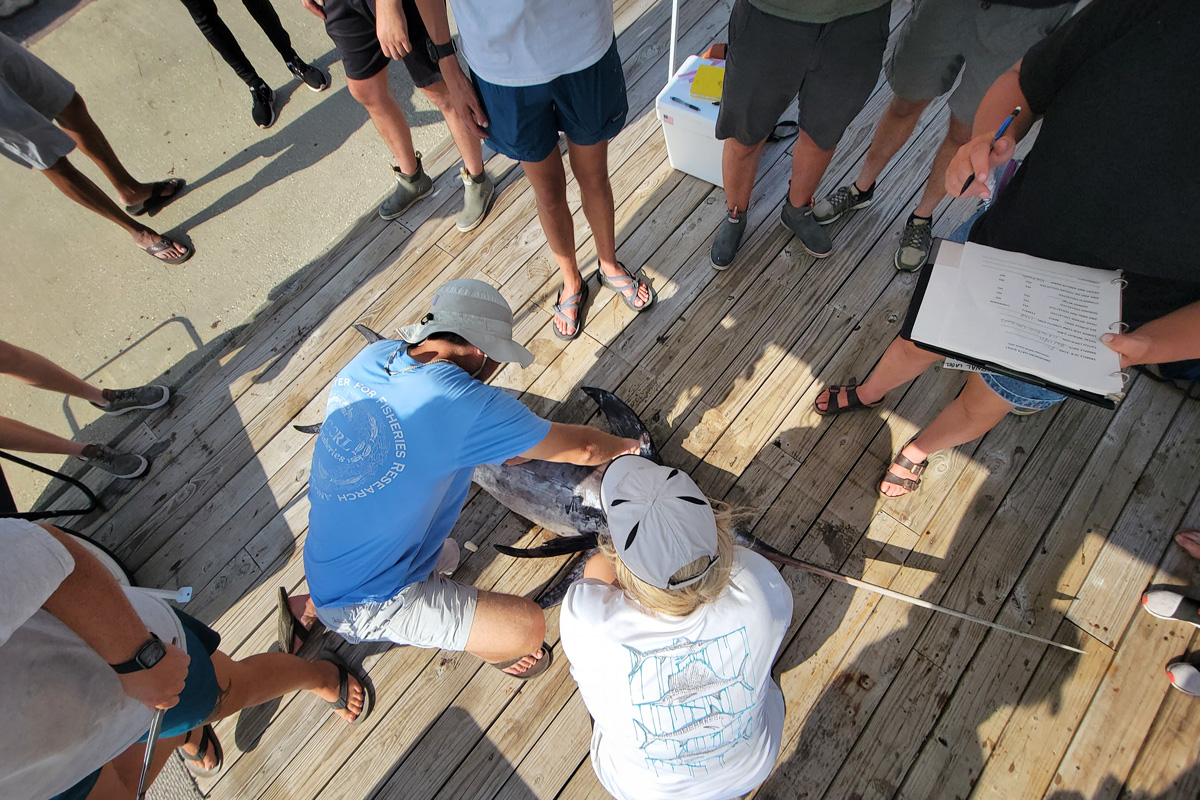
Even the most miniscule parasites tell the researchers at the research laboratory’s endless stories about the nature of the Gulf ecosystem. Their presence at every level of the greater food web provides subtle clues to the delicate balance of life—and the complicated relationships between organisms and environment that dedicated study reveals.
This is the primary goal of GCRL’s decades-long partnership with the Billfish Classic. Jeremy Higgs is the research manager at the lab’s Center for Fisheries Research and Development. At times during the long, hot Saturday tournament, he is forced to serve as a bouncer for the research tent, as the crowd swells, overtaking the pier. With that accomplished, he returns to the careful extraction of freshly caught data.
“Through the otolith, the earbones—we can get the age of these fish that are being brought to the dock,” he explained. “We take tissue to see their reproductive state. We collect stomachs, and there we have a chance to look at a snapshot of their diet. It’s a small period of time, but it gives us more insight into what they’re feeding upon in their natural habitat.”
This data quickly makes its way from speculative research to meaningful, real-world applications. “All of this information is really important for future conservation and management of these species: the ages and the reproductive data that we collect go to bigger datasets. We provide that data to managers (like the Department of Marine Resources) and that ultimately helps with conservation,” Higgs said.
‘This Is Our Mission’
“This is our mission,” explains Dr. Read Hendon, director of GCRL in a later interview with the Mississippi Free Press. “Conducting research and developing science programs to help the state, the region and the nation better understand our coastal and marine ecosystems, and (to improve) the sustainable and productive use of those resources.”
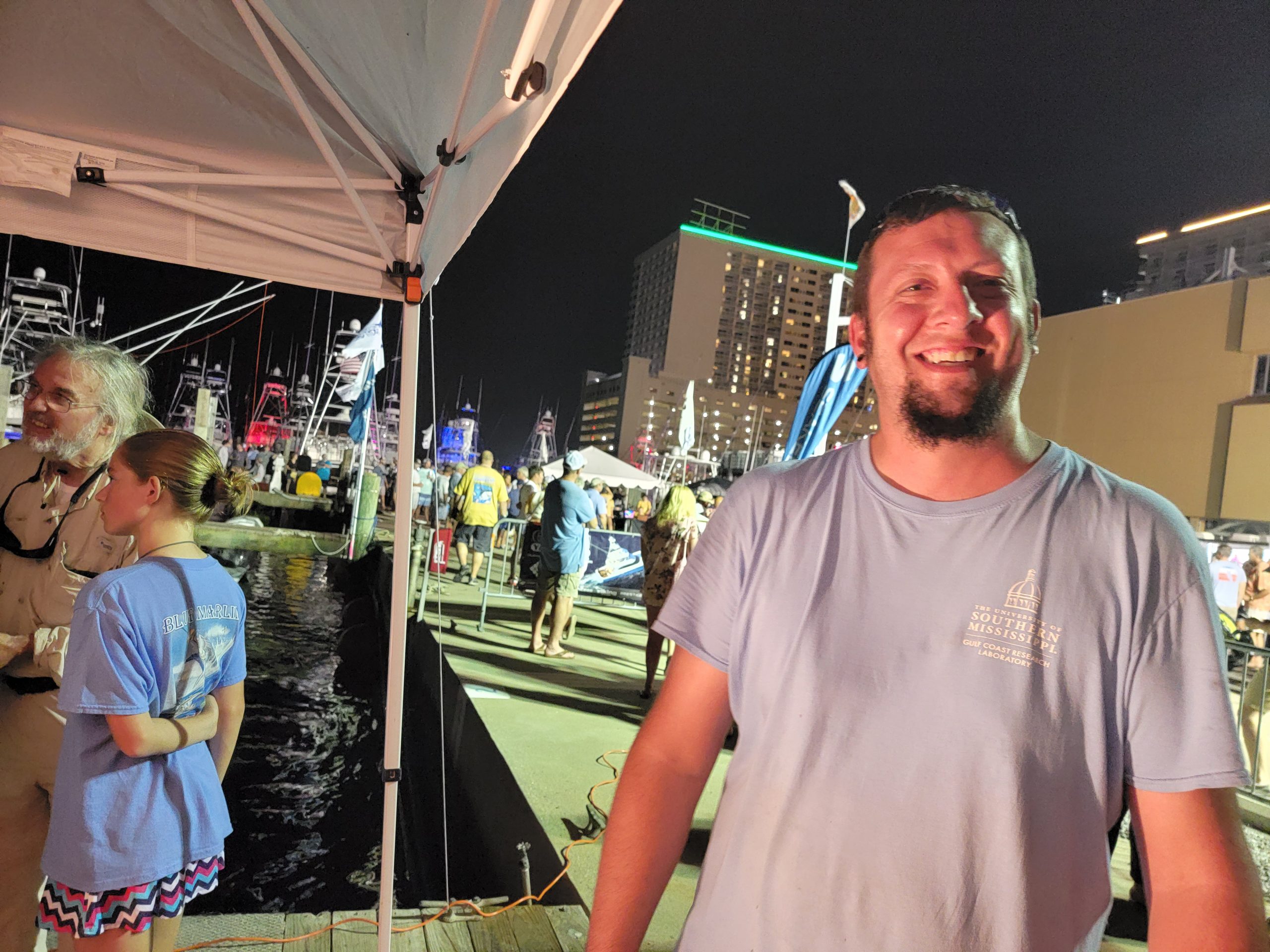
Hendon made the transition from field research to administration years ago. A hint of regretful nostalgia lingers in his tone when he speaks about fieldwork. “The biology of swordfish in the Gulf of Mexico is (still) so poorly understood,” he explains. Protection of species like swordfish and marlin is impossible without an ever-growing understanding of their basic biology, and relationship to the broader ecosystem.
“If you don’t know how fast those fish grow, if you don’t know at what age or at what size they reproduce, then that’s a real large gap in our understanding of how we can successfully manage the species,” Hendon said.
Other concerns exist: any resource extraction for the purposes of scientific inquiry has to be sustainable. Dr. Jill Hendon, interim director for the lab’s Center for Fisheries Research and Development explained in a later statement to the Mississippi Free Press. “Through our research endeavors, we have a fairly good understanding of the coastal dynamic: the food web structure, life history characteristics, habitat use, etc. The dynamic of the offshore community is less well understood simply because it is more difficult to explore such a large system while still implementing ethical conservation measures,” she wrote.
The difficulty in extracting valuable information about Gulf Coast species comes from more than the elusiveness of the fish themselves. “If you look at Alaska, that’s a fairly static system,” Read Hendon said. “But here, in the north-central Gulf, with the Mississippi River, the Pearl River and the Pascagoula River, our system can change hour to hour, week to week.”
For the shifting ecological conditions of the Gulf, conditions are quite literally whichever way the wind blows.
Lapniewski, Greenheck, Higgs and the rest of the GCRL researchers remain at the pier through the sweltering day and into a cool and busy evening. Long after the crowd has begun to disperse, the scientists remain. Night sets in, and the team wields electric lamps to continue their work.
If Higgs is tired by the end of the day, it doesn’t show. An angler has caught what promises to be the largest swordfish ever hooked in Mississippi state history. Fifteen boats still linger out in the waters, waiting to deliver their catches to be judged—and then dissected. Higgs wipes the sweat off of his brow and grins. He could do this all night.
The Old Man and the Sea
An enormous presence is missing from the day’s events, and his absence is on the mind of every researcher in attendance. Jim Franks is neither the founder nor the director of the Gulf Coast Research Laboratory. But he is the program’s godfather: its oldest veteran, its public face, and a beloved guide to marine researchers young and old.
Franks sees himself in humbler terms. “Our work is a multidisciplinary effort—many, many people working together, all with expertise in various aspects of biological research. It’s always been a team effort, from fisheries personnel to our academics,” he told the Mississippi Free Press in a phone interview days after the tournament, while recovering from health troubles at home.
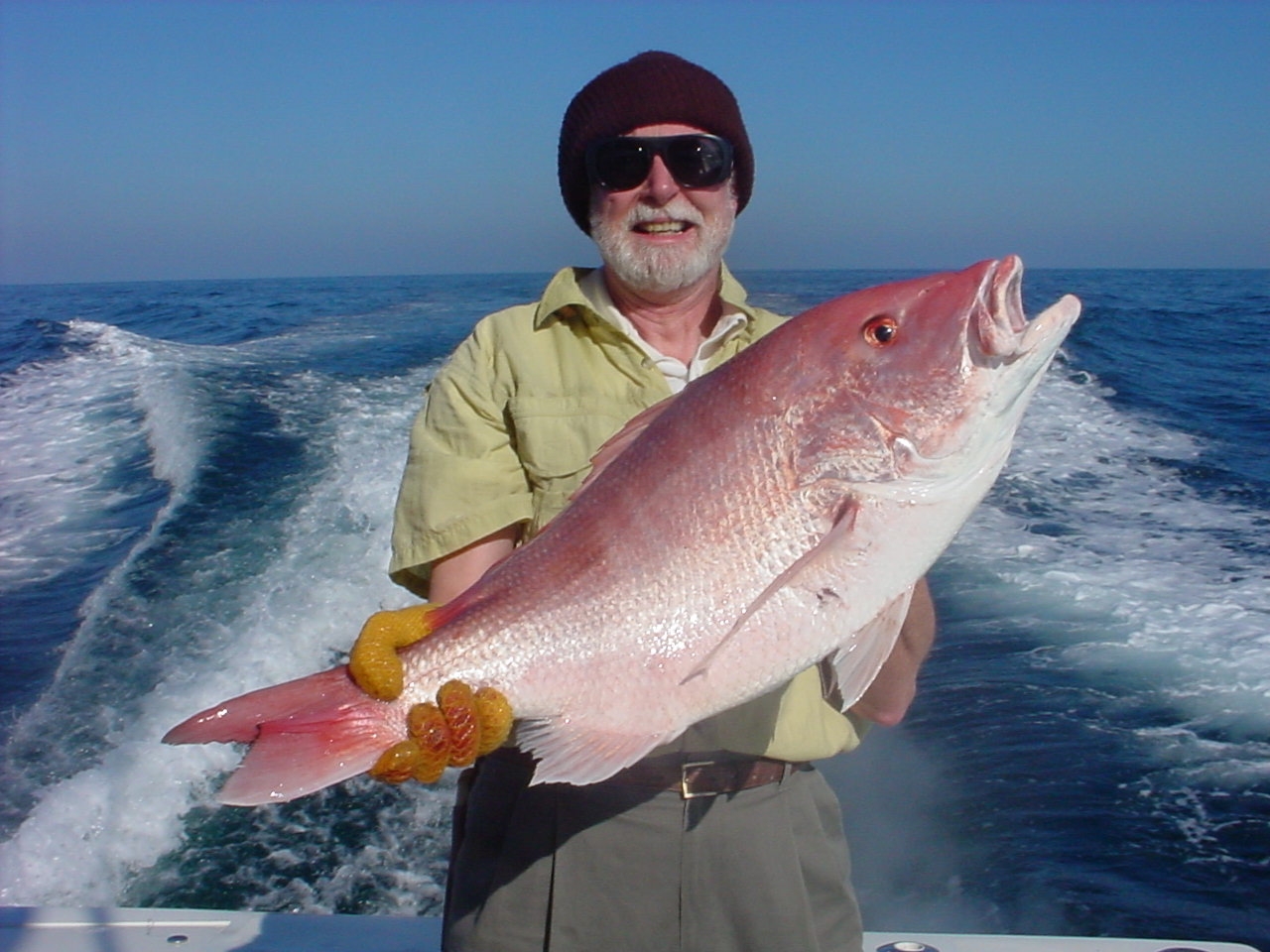
Read Hendon is among Franks’ many admirers. He first came under Franks’ tutelage in 1995, when Hendon was only an undergraduate. Franks’ time at GCRL stretches back to the 1960s, a remarkably long tenure.
“I can’t imagine having a better first boss than Jim. He was so patient, an excellent teacher. He is 110% dedicated to what he does,” Hendon said. “Fisheries and marine biology is his life.”
Franks has a deep understanding of the granular biology of individual species in the Gulf. But he also has a keen awareness of the greater ecosystem—and humankind’s relationship with it. “Over the last couple of decades, there’s been a great effort put forth by many regarding the effects of human interaction with marine resources in the Gulf of Mexico—with marine resources around the world,” Franks explains.
That interaction includes fishing, of course, but extends to broader ecological catastrophe. The Deepwater Horizon oil spill of 2010 is still fresh in the minds of all marine researchers on the Gulf. The largest marine oil spill in human history, the Deepwater Horizon devastated local ecosystems.
To Franks, the laboratory’s work contributes to an understanding of the long-lasting harm the spill caused. But it also provides valuable data for benchmarking if—or when—another man-made environmental catastrophe occurs. “You have to get a feel for the status of those stocks, in case there is another spill. Hopefully that’ll never happen,” Franks said. “But it’s ongoing. It’s been ongoing since the Gulf oil spill.”
Between Predator and Prey
The same information feeds into our understanding of the highest level of anthropocentric—human-caused—disaster. “Climate change is something of interest to every research scientist, in many respects. The research community has always been aware of some of those changes, but now I think it’s getting the attention it deserves,” Franks explained. “Now we’re understanding how humans influence it.”
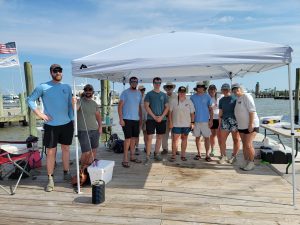
The reach of even the simplest scientific inquiry can be staggering, especially for those without a background in ecology. What could the shape and size of a swordfish’s ear inform us about the global consequences of climate change?
“Everything is interconnected,” Franks replied. “I still find it fascinating, too. Our system is so well-tuned to function at a level that’s beneficial to the (sum) of its parts. Of course, that can be changed,” he added. “It’s tightly knit: the interactions between predator and prey, the oceanographic conditions, hydrographic conditions … if that’s disrupted, it can all get off cue.”
The Billfish Classic, and GCRL’s presence there, is not quite the same without the towering presence of Franks. But his students and colleagues are hard at work all the same, engaging with interested observers, meticulously exploring their glimpse into the depths of the Gulf with the same dogged curiosity they learned, in part, from Franks.
Late in his career, it is the cohort of students and researchers succeeding him that seem most important to Franks. He is old enough to have molded the careers of scientists now eminent in their own right. “They’re the next generation,” he says, “And that’s why we’re trying to give them these hands-on experiences: so they can carry this work forward.”
Back at the tournament, Lapniewski finds a moment in between processing a trio of billfish to reflect. For all the young field researcher’s insistence that others could better describe Franks’ significance, no one puts it more succinctly.
“Everything he is,” Lapniewski says, “we are.”

